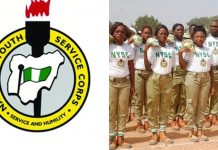SUBJECT:BIOLOGY |
CLASS: SSI |
DURATION: 2½ HOURS |
SECTION A: OBJECTIVE |
1. Each member of symbiosis association is referred to as _______ (a) biotic (b) symbiont (c) beneficial (d) vector |
2. Fungus and algae in lichen can be seen as an example of ________________ (a) commensalism (b) saprophytism (c) mutualism (d) predation |
|
4. When an association made up of one organism benefiting and the other is neither benefiting nor harm, such is _________ association (a)commensalism (b) predation (c) parasitism (d) mutualism |
|
5. In commensalism association, the one benefiting is called ________(a) predator (b) commensal (c) prey (d) parasite |
6. An association where one kills the other as food is called ___________(a) saprophytism (b) parasitism (c) predation (d) commensal |
7. Between Hawk and Chick in predation association, the Hawk is _______, while the Chick is ___________ (a) host, parasite (b) commensal, parasite (c) prey, predator (d) predator, prey |
8. Competition that exist between the member of the same species is called ______ (a) intra-specific competition (b) inter-specific competition (c) inter-house competition (d) family competition |
9. Organism that do not need opposite sex before fertilization is said to be ____ (a) non-sexual organism (b) hermaphrodite (c) Unisexual (d) sterile |
10. Possession of wings for flight is a structural adaptation of animals that live in _______ habitat (a) aquatic (b) terrestrial (c) abboreal (d) On-land |
11. The harmful substance that can pollute the human health and cause environmental pollution is called _______ (a) vector (b) parasite (c) pathogen (d) pollutant |
12. _________ is formed whenever fuel is burned incompletely (a) carbon monoxide (b) carbon dioxide (c) chloroflorocarbon (d) hydrocarbon |
13. One of the effects of water pollution is _____(a) it causes suffocation (b)it can kill aquatic organism(c)it leads to respiratory disorder(d)it causes deafness |
14. The way of planning, controlling of exploitation or judicious use of natural resources to ensure their continuous availability is called _______ (a) convection (b) preservation (c) conservation (d) resources |
15. Prohibition of killing of wild animals in forest reserves is called _________ (a) discrimination (b) forest (c) afforestation (d) poaching |
16. The aspect of Biology that deals with the study of microscopic organisms is called______(a)Microbiology (b)Microscope (c) Parasitology (d) bacteriology |
17. Micro-organisms that are harmless are called __________, while those that can cause diseases are called _________ (a) pathology and parasitology (b)non- pathogenic and pathogenic (c) pathogenic and non-pathogenic (d) protozoa and virus |
18. Bacteria which stick together to form a chain is called ________(a) streptococci (b) tetrads (c) bacilli (d) vibrio |
19. Another name for rabies virus is ________(a) hydrophobia (b) xenophobia (c) agoraphobia (d) river blindness |
20. One of these is a fungal disease (a)rabies (b) eczema (c) poliomyelitis (d) malaria |
21. The condition or situation whereby more animals that cannot be supported on a particular pasture are put there to graze is known as ____ |
22. ________ is one of the effects of bush burning |
23. The chemical made specifically for controlling pests is known as _________ |
24. The group of organisms that are capable of destroying and damaging the crop plants are called ________ (a) parasite (b) pest (c) pathogens |
25. Biting and chewing insects possess mouth parts known as _______ and ____ (a)biting and sucking(b)piercing and chewing(c)biting and chewing |
26. ____ and ____ are among the examples of biting and chewing insect pests |
27. The mouth parts of piercing and sucking insects is called _______________ (a) proboscis (b) labium and labrum (c) mandible and maxillae |
28. The pests that are capable of living inside the plant tissues and destroy them are classified as____ (a)pathogens(b)borers(c)piercing and sucking |
29. The type of farming inwhich land is used for a year or more and abandoned to relax for some years is known as _____ (a) crop rotation (b) continuous cropping (c) shifting cultivation |
30. The system of farming whereby a farmer rears animals and cultivates crops on the same piece of landis called _______ (a) mixed cropping (b) mixed farming (c) mixed culture |
THEORY |
Answer any seven (7) questions from the questions |
1a. Define completion with at least three examples |
b. Give any three plant adaptation to the following Habitat |
i. Aquatic ii. Terrestrial |
c. Write on i. Xerophyte ii. Mesophyte |
2a. Define Adaptation |
b. Give any three adaptation of animal to i. Aboreal ii. Aquatic iii. Terrestrial |
c. List three through which water can be polluted |
3a. Define pollution |
b. Differentiate between the two types of natural resources with examples in each |
c. Give any three (3) effects and (3) controls of pollution |
4a. With examples in each, discuss on any three of the following |
i. Commensalism ii. Mutualism iii. Parasitism iv. Predation |
b. Write on how we can conserve any three of the following |
i. Forest ii. Water iii. Soil iv. Mineral Salt v. Wildlife |
c. State five (5) benefits of conserving natural resources |
5a. Discuss in detail on any three (3) types of micro-organisms |
b. Give any seven (7) beneficial effects of micro-organisms |
c. Discuss on the contributions of the following |
i. WHO ii. UNICEF iii. International Red Cross Society iv. NMA |
6a. Give any five (5) economical importance of pests in crop production |
b. Discuss on any two (2) methods of controlling pests in detail |
c. Define diseases of crop |
7a. List all the word biomes and give at least two characteristics of any three (3) of your choice |
b. Write short note on the following |
i. Environment ii. Atmosphere iii. Biosphere iv. Habitat v. Lithosphere |
c. List and explain any five (5) agricultural classifications of crops with examples each |
Kindly share with friends, fellow teachers and family members




